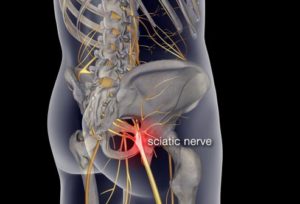Medicines for back pain – To get to know which medicines are helpful for back pain, we first have to explain what it is. Back pain is a very common process that occurs at any age, and especially after 60 years.
Back pain represents the second cause of medical consultation in primary care. It affects 70-80% of the adult population at some time in their life and generates visits to doctors of different specialities: chiropractors, orthopaedic surgeons, neurosurgeons, etc. Low back pain is also the first cause of work absenteeism and permanent disability in developed countries. The ultimate goal in the approach to low back pain is to ensure that the person with low back pain achieves a daily life with the highest possible levels of quality and functionality.
Definition of low back pain
Low back pain is a medical term which describes those clinical cases in which the patient reports pain. It is usually accompanied by muscular tension, in the lumbar region of the back, which includes the last 5 lumbar vertebrae and the sacrum.
It can manifest clinically as pain in the lumbar region (simple or non-irradiated low back pain) or irradiated by one or both legs, following the path of a nerve trunk or its ramifications (irradiated low back pain), being able in these cases to be accompanied by neurological symptoms (tingling, paraesthesia). When the pain spreads along with the territory corresponding to the sciatic nerve, it is called sciatica or lumbosciatica.
Treatment
The treatment of low back pain basically uses two types of therapeutic measures: physical and pharmacological means.
Medicines
In acute or chronic low back pain, pain is the main component of the condition, conditions the entire disease and the patient’s own life revolves around his daily pain.
The goal of drug treatment is to eliminate this symptom. The patient can start physical therapy as soon as possible and recover the functional capacity.
Analgesia
The administration of analgesics in low back pain, as in all acute or chronic pain, must be accompanied by a protocol for use. The beginning of the treatment must go through the oral route, which is the most effective. The following guideline was designed by the World Health Organization (WHO). It consists of four steps:
First step
At this level the pain is mild. The patient should take the drug as soon as possible and at maximum dose. NSAIDs (acetylsalicylic acid, ibuprofen, diclofenac, among others) will be administered. In this step, paracetamol is also a reference drug, at doses up to 4 g / 24 hours. The most common side effect of NSAIDs is gastrointestinal.
Second step
The pain is mild to moderate. Weak opioids such as codeine or tramadol, which can be added analgesics of the first level. The most common side effect of opioids is constipation, especially in the elderly, and has to be treated.
Third step
The pain is of a moderate-severe type. Doctors use powerful opioids such as morphine, methadone, or fentanyl to alleviate it (the latter in the form of transdermal patches).
Fourth step
The pain in this phase is severe. Specialists perform specific techniques such as spinal (epidural) or peripheral nerve blocks, using infiltration of local anaesthetics, opioids, corticosteroids, etc.


